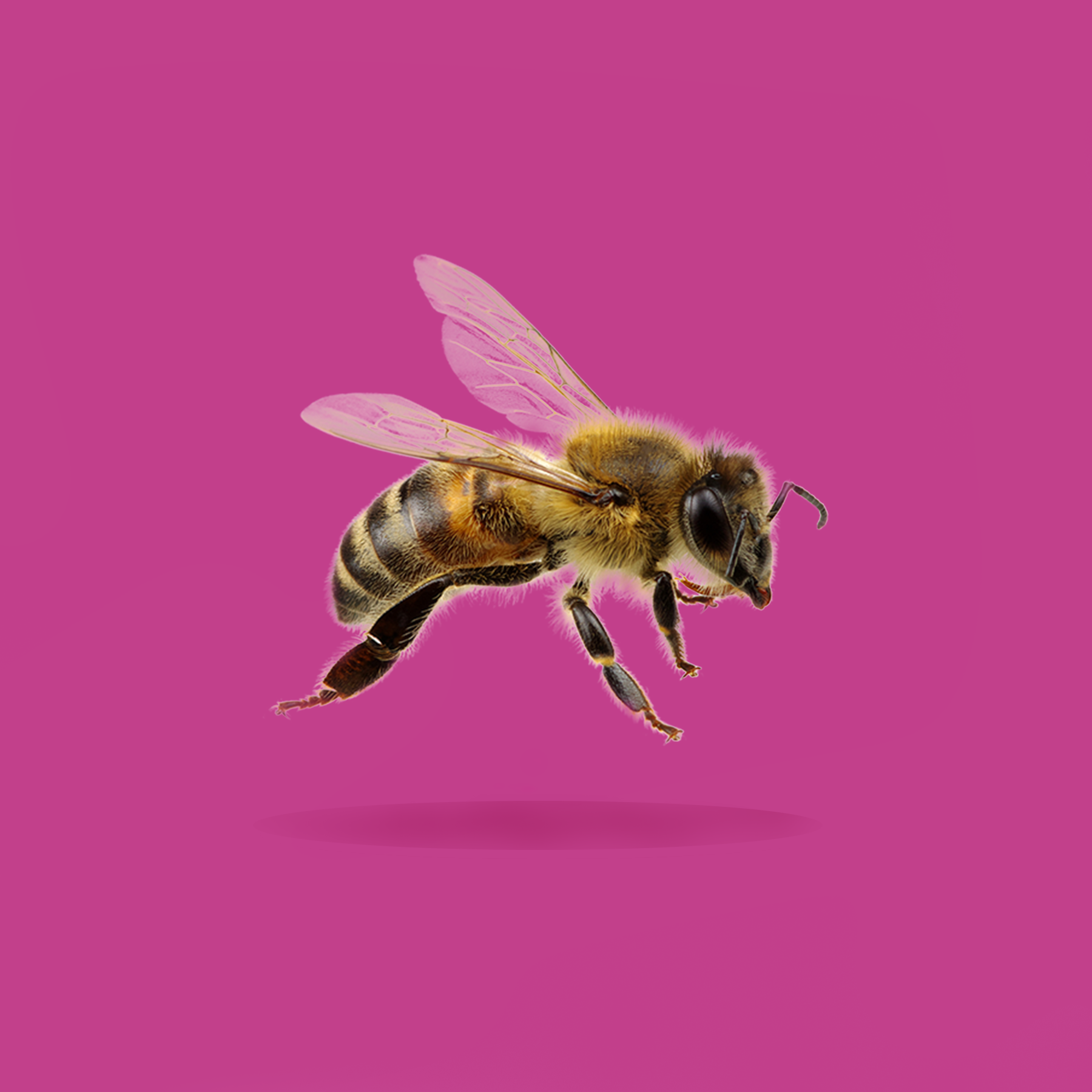A curiosa anatomia das abelhas

Essenciais para a polinização de frutas e vegetais utilizados na nossa alimentação, a frequente inserção de abelhas entre as espécies ameaçadas de extinção é preocupante. No Brasil, por exemplo, profundamente dependente do agronegócio, podemos afirmar que elas são vitais para uma saúde econômica nacional – principalmente se levarmos em conta um artigo publicado em 2015 por Giannini e seus colaboradores, que contabilizou como cerca de 12 bilhões a contribuição desses insetos na produção e manutenção de culturas agrícolas.
Por tal colocação nas listagens de espécies ameaçadas de extinção, podemos afirmar que a abundância e a diversidade das abelhas têm diminuído drasticamente e por diversos fatores, como a perda de hábitats, mudanças climáticas, a intensificação agrícola e o uso de agrotóxicos. No Brasil, destaca-se o uso de agrotóxicos, dado que o país está recorrentemente ampliando o consumo de tais produtos – algo que, apesar de não ter as abelhas como alvo, atinge-as principalmente no ato da forragem (busca e exploração por recursos alimentares).
A importância desses organismos e o cenário de conservação das suas espécies, acima explicitado, garantiu-lhes o título, pelo Royal Geographical Society of Londol, de organismos vivos mais importantes do mundo. Entretanto, apesar de acreditarmos ser importante a contribuição das abelhas para a economia e conservação da flora, gostaríamos de elucidar um pouco sobre o sistema nervoso desses insetos que, apesar de pequenos, possuem uma complexa interação com o meio ambiente. Para tal, utilizamos o artigo “Revisão da anatomia do sistema nervoso central de Apis mellifera: uma base teórica para estudos ecotoxicológicos”, das pesquisadoras Patrícia Azevedo e Roberta Cornélio Ferreira Nocelli.
As abelhas, como os humanos, possuem um sistema nervoso central, responsável pelo processamento de informações, e um sistema nervoso periférico, responsável pela captação de estímulos ambientais. Em seu sistema nervoso central temos um cérebro, estrutura que nas abelhas adultas é bilobada e dividida em dois “centros de controle”, o subesofágico e supraesofágico. De modo geral, como no sistema nervoso humano, o SNC e o SNP das abelhas trabalham em conjunto para captar as informações externas e internas com vistas a processá-las e gerar respostas adequadas aos estímulos.
Guarda mérito, entretanto, uma incrível capacidade que as abelhas possuem de aprender. Acontece que, ao captar uma informação visual – perceber um objeto, por exemplo – as abelhas podem não só perceber as informações, mas suas integrações, como quais as características daquele ambiente onde se encontra o objeto, quais as cores, quais movimentos fazem aquele objeto naquele ambiente, etc.
Essa questão de aprendizado, aliás, atinge também o olfato. Guerrieri e colaboradores, em um estudo de 2005, demonstraram que, ao testar a apresentação de odores às abelhas, estes poderiam ser aprendidos e posteriormente memorizados, inclusive com elas se direcionando mais a buscar aqueles odores que trazem maior recompensa alimentar.
A ideia de que as abelhas são capazes de aprender e memorizar é, em si, reforçada por estudos que evidenciaram que há um incremento no tamanho e número de conexões das células que compõem seu sistema nervoso à medida em que esses insetos envelhecem – o que indica um fortalecimento da capacidade do cérebro a medida que se enriquecem os estímulos sensoriais.
Essa capacidade de aprendizado das abelhas desenha um sistema nervoso extremamente complexo que desempenha um vasto repertório organizacional e comportamental. Em si, tem-se nesses insetos a viabilização de uma capacidade cognitiva que, permitindo aprendizagem e memorização, traz possibilidade de constantemente aperfeiçoarem suas atividades e habitats.
Por Carolina Guimarães de Mattos
Bióloga, redatora e mestra em Divulgação da Ciência, Tecnologia e Saúde







 revistadabiologia@ib.usp.br
revistadabiologia@ib.usp.br 2008 - 2024 Revista da Biologia
2008 - 2024 Revista da Biologia